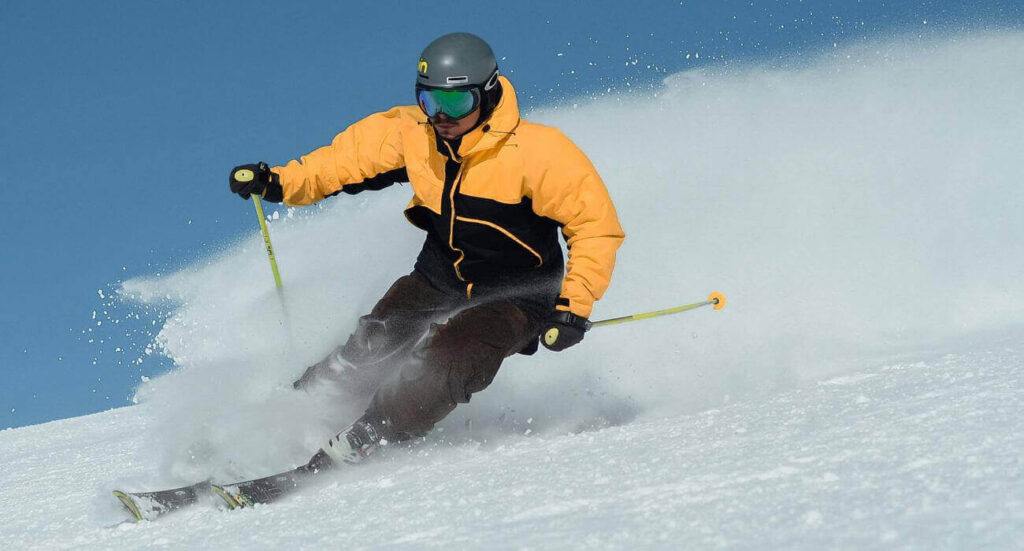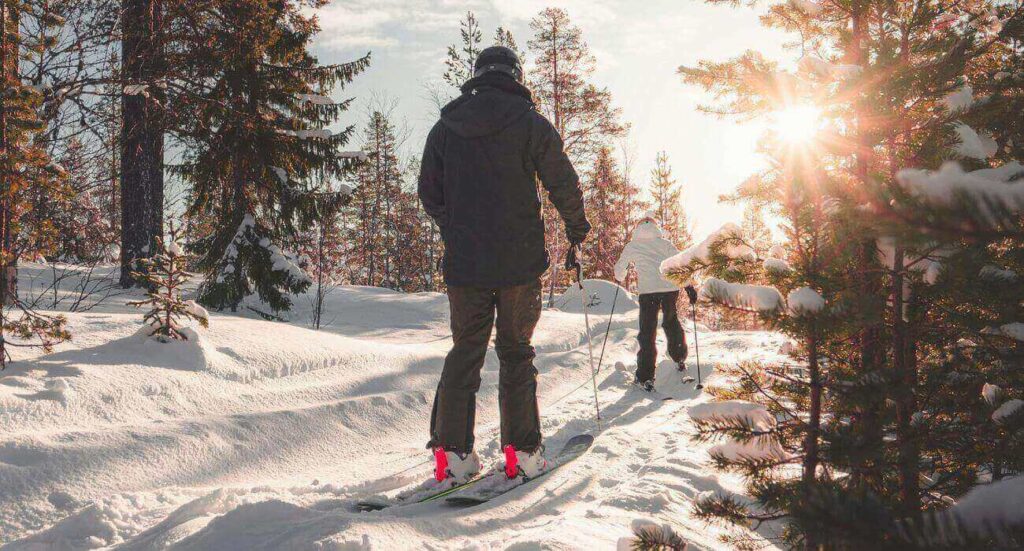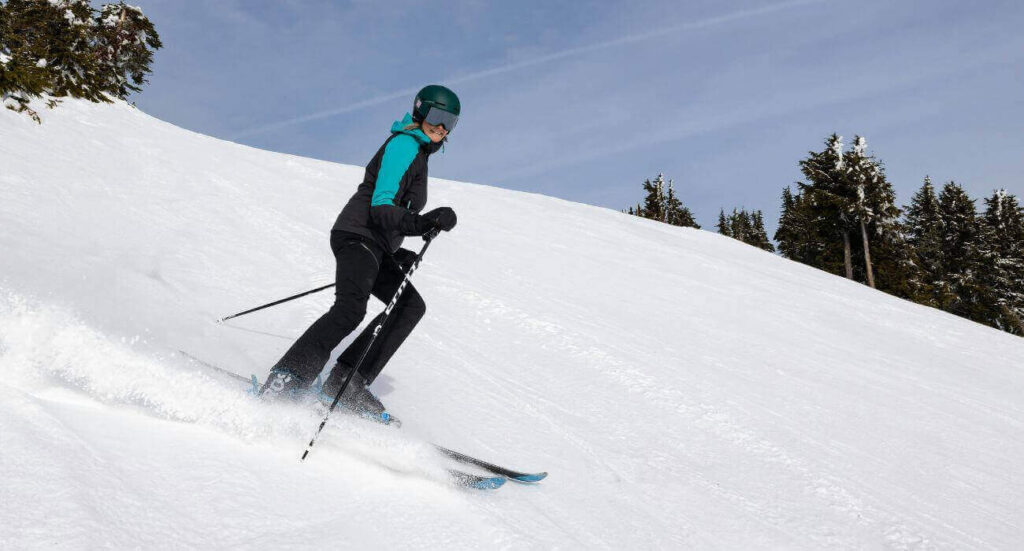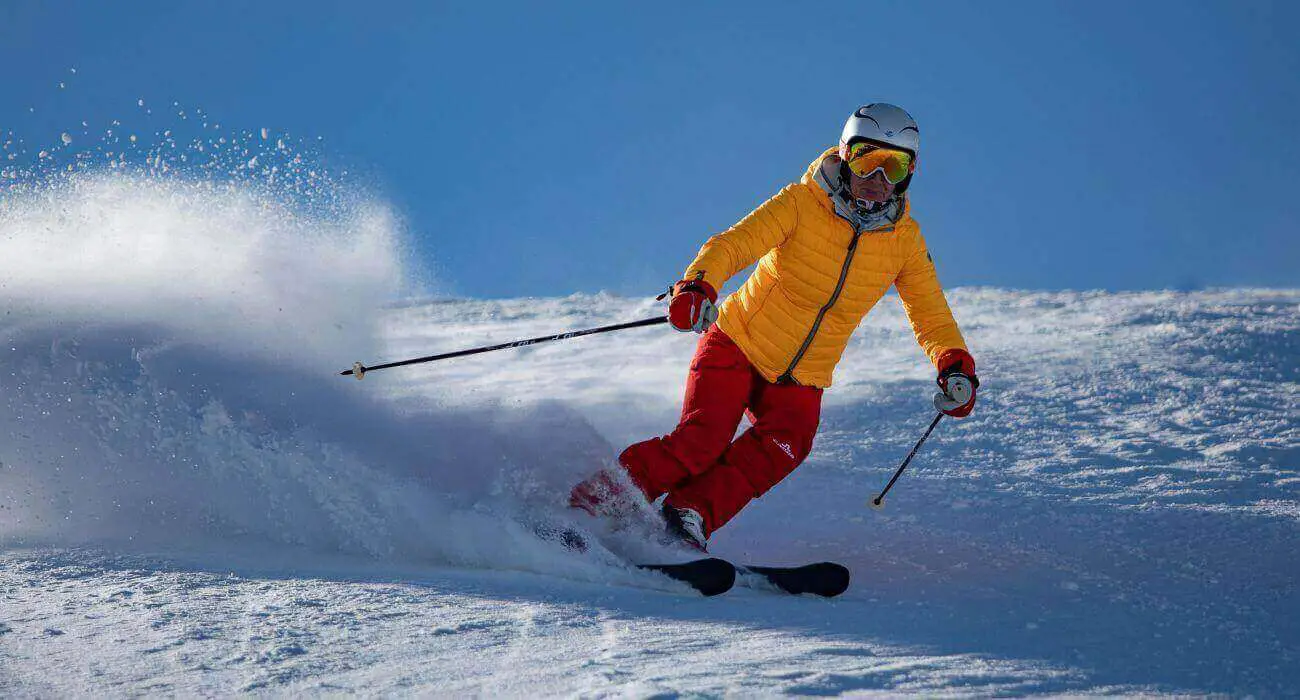As an Amazon Associate, I earn from qualifying purchases
For skiing, you should wear a thermal base layer, sweatshirt/fleece, ski jacket, ski trousers, ski socks, gloves, and a neckwarmer. Avoid wearing jeans as they will leave you cold and wet.
Must-have Ski Clothing

When it comes to skiing, having the right clothing is essential. The right ski gear not only keeps you warm and comfortable on the slopes but also ensures your safety. In this section, we will discuss the must-have ski clothing that every skier should have in their wardrobe.
Thermal Base Layer
The first item on your ski clothing list should be a thermal base layer. Made from materials like Merino wool or polyester, these base layers are designed to provide warmth and moisture-wicking properties. They can trap air even when wet, keeping you warm and dry throughout your ski session.
Sweatshirt/fleece
The next item you should consider is a sweatshirt or fleece. These mid-layers provide additional insulation and help to regulate your body temperature. Opt for a sweatshirt or fleece that is lightweight, breathable, and offers good insulation to keep you warm in colder conditions.
Ski Jacket
A ski jacket is an essential piece of clothing when hitting the slopes. It protects you from the cold wind, snow, and moisture while providing insulation. Look for a ski jacket that is waterproof, breathable, and has insulation to keep you warm and dry throughout the day.
Ski Trousers
Investing in a good pair of ski trousers is crucial for a comfortable skiing experience. Look for ski trousers that are waterproof, windproof, and have insulation. The trousers should also have adjustable waistbands and snow gaiters to keep the snow out.
Ski Socks
Don’t overlook the importance of wearing proper ski socks. Ski socks are designed to keep your feet warm, dry, and comfortable inside your ski boots. Opt for socks made from merino wool or synthetic materials that offer moisture-wicking properties and cushioning for a comfortable fit.
Gloves
Protecting your hands from the cold is essential during skiing. Invest in a good pair of ski gloves that are waterproof, breathable, and offer insulation. Look for gloves with adjustable wrist straps to prevent snow from entering and ensure a snug fit.
Neckwarmer
A neckwarmer, also known as a gaiter or buff, is a versatile accessory that helps to keep your neck and face warm. Look for a neckwarmer made from moisture-wicking materials that provide insulation and can be easily adjusted to cover your face when needed.
Now that you know the must-have ski clothing, it’s time to get your ski gear and hit the slopes!
What Not To Wear On The Slopes

When hitting the slopes, avoid wearing jeans as they will leave you cold, wet, and out of your element. Opt for thermal base layers, ski jackets and trousers, ski socks, gloves, and a neckwarmer for a comfortable and stylish skiing experience.
Avoid Jeans
When it comes to skiing fashion, there is one major faux pas that you should always avoid – wearing jeans on the slopes. Jeans may be a staple in your everyday wardrobe, but they are not suitable for the cold and wet environment of the mountain.
Firstly, wearing jeans while skiing or snowboarding will leave you feeling cold. Denim is not a good insulator and does not provide the necessary warmth to keep you comfortable on the slopes. Additionally, jeans tend to absorb moisture, whether it’s from snowfall or your own sweat. This can leave you feeling damp and uncomfortable throughout your day on the mountain.
| Reasons to avoid wearing jeans on the slopes: |
|---|
| 1. Lack of insulation: Jeans are not designed to provide warmth and insulation in cold temperatures. They do not have the necessary materials or construction to keep your legs warm while skiing. |
| 2. Absorb moisture: Jeans have a high absorbency rate, meaning they can quickly become wet and heavy when exposed to snow or water. This can not only make you uncomfortable but may also lead to hypothermia in extreme conditions. |
| 3. Restricted movement: Jeans are typically made from rigid denim fabric, which limits your range of motion. This can hinder your skiing or snowboarding performance and make it difficult to maneuver on the slopes. |
| 4. Uncomfortable fit: Jeans are not designed with the flexibility and comfort required for winter sports. The tight and restrictive fit can restrict blood circulation and cause discomfort during long hours of skiing or snowboarding. |
To ensure a comfortable and enjoyable skiing experience, it is important to choose appropriate ski clothing made specifically for winter sports. Opt for ski-specific pants or salopettes that offer good insulation, water resistance, and freedom of movement. These will keep you warm, dry, and comfortable throughout your day on the slopes.
In conclusion, avoid wearing jeans when skiing or snowboarding. They are not suitable for the cold and wet conditions of the mountain, and can leave you feeling cold, damp, and restricted in your movement. Invest in proper ski clothing designed for winter sports to ensure a comfortable and enjoyable experience on the slopes.
Ultimate Women’s Ski Apparel Guide

Discover the ultimate women’s ski apparel guide for what to wear when skiing. From thermal base layers to ski jackets and gloves, this comprehensive guide has you covered for your next ski adventure. Stay stylish, warm, and comfortable on the slopes with these must-have ski clothing items.
Skiing Outerwear
When hitting the slopes, having the right outerwear is essential for staying warm, dry, and fashionable. Your ski jacket and trousers are the first line of defense against the elements. Look for waterproof and breathable materials to keep you protected from the snow and wind.
Popular ski clothing brands to consider include The North Face, Arc’teryx, Columbia Sportswear, Salomon, and Patagonia. These brands offer a wide range of styles and designs, ensuring you’ll find the perfect outerwear for your skiing adventures.
Skiing Base Layers
The key to staying warm on the slopes starts with your base layers. Opt for thermal base layers made from materials such as Merino wool or polyester. These fabrics are able to trap air even when wet, keeping you insulated and comfortable throughout the day.
For additional warmth, layer a sweatshirt or fleece on top of your base layers. This will provide extra insulation and help regulate your body temperature as you tackle the slopes.
Skiing Accessories
Don’t forget to accessorize! Before heading out, make sure to pack essential accessories that will enhance your skiing experience.
- Ski socks: Choose socks specifically designed for skiing to ensure maximum comfort and moisture-wicking properties.
- Gloves: Invest in a good pair of waterproof and insulated gloves to keep your hands warm and protected.
- Neckwarmer: To shield your neck and face from the cold, consider wearing a neckwarmer or a buff.
Frequently Asked Questions Of What To Wear When Skiing
What Clothes Should You Wear When Skiing?
For skiing, wear a thermal base layer made of Merino wool or polyester. Layer with a sweatshirt or fleece, and wear a ski jacket and trousers. Don’t forget ski socks, gloves, and a neckwarmer. Avoid wearing jeans as they can leave you cold and wet.
Get your ski gear ready!
What Not To Wear On Ski Slopes?
Avoid wearing jeans at all costs on ski slopes. Jeans will leave you cold, wet, and out of place. Stick to thermal base layers, sweatshirts/fleeces, ski jackets, ski trousers, ski socks, gloves, and neckwarmers. Get proper ski gear for a comfortable and enjoyable experience.
What Do You Wear To Ski In 40 Degree Weather?
For skiing in 40-degree weather, wear a thermal base layer, a sweatshirt/fleece, a ski jacket, ski pants, ski socks, gloves, and a neckwarmer. Avoid wearing jeans as they can leave you cold and wet. Make sure to get proper ski gear.
What Should I Wear To Ski For One Day?
For a day of skiing, wear a thermal base layer made of Merino wool or polyester, a sweatshirt or fleece, a ski jacket, ski trousers, ski socks, gloves, and a neckwarmer. Avoid wearing jeans as they can leave you cold and uncomfortable.
Make sure to get your ski gear.
Conclusion
To ensure your comfort and safety while skiing, it’s important to wear the right clothing. Start with a thermal base layer made from Merino wool or polyester, which can trap air even when wet. Layer on a sweatshirt or fleece for added warmth, and don’t forget your ski jacket and trousers.
Keep your hands and feet cozy with gloves and ski socks. And don’t forget to accessorize with a neckwarmer to protect against cold winds. By following these guidelines, you’ll be ready to hit the slopes in style and stay warm all day long.
Happy skiing!
Read More
Top 5 Best Hydration Pack For Skiing
How to Insulate a Tent for Winter Camping
Top 10 Best Ski Racks For Garage
As an Amazon Associate, I earn from qualifying purchases

